James Chang: Inheriting the Past, Going the Forward
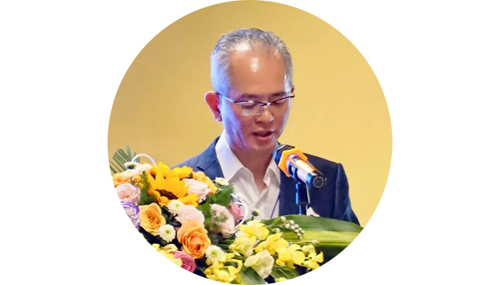
Mr. James Chang
Suzhou Taifa Coloured Thread Weaving Co., Ltd., Chairman
Distinguished guests and friends from the silk industry, good morning.
I am James Chang, chairman of Suzhou Taifa Coloured Thread Weaving Co., Ltd., the second-generation successor of the silk industry. Today, I am honored to be invited by the organizer to exchange a few ideas and perceptions with all the senior silk manufacturers present here.
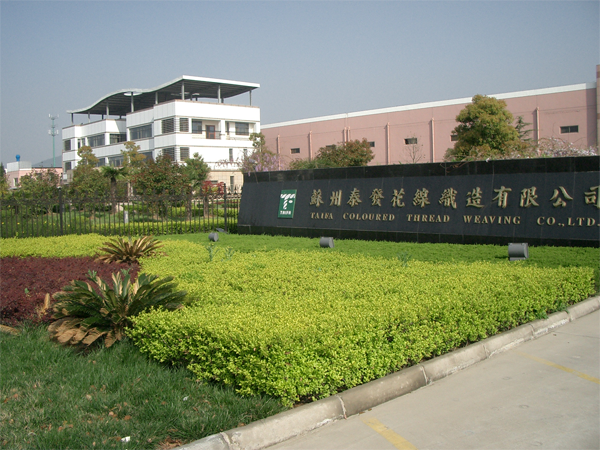
My father founded Taiwan headquarters in 1956 and Suzhou branch factory in 1992. It has been 60 years since then. For half a century, Taifa has been focusing on the production of delicate and high-end silk yarns. Now it can produce more than 200 kinds of twisted silk yarns with an annual output of more than 150 tons, all of which are exported to European and Japanese markets for the weaving of high-grade silk scarves, fabrics and ties. Taifa puts “craftsman spirit” into every production processing, carefully selected silk materials from various aspects such as mulberry planting source and raw silk producing plant. If there is no high quality raw silk, then, there will be no good quality thrown silk yarn. The complex inspection process make sure a strict inspection of every process from material in factory to products out of factory. Based on the different products, the processes are also adjusted, so, we can be flexible to change the style and pattern of thrown silk yarn to meet the customers' sophisticated demands. Once there were clients have given the accurate and vivid comments to Taifa, which is like an amphibian --- a frog that breathes both in water and on land, as Taifa can meet the totally different quality requirements of the Japanese and European markets at the same time.
Japanese customers strive to use “heart” management, they pay attention to the experiences and focus of manual craftsmen; However, European customers pay more attention to the control of raw silk with quantitative data and testing instruments. Since the beginning of raw silk, electronic testing is required to control the internal performance of raw silk as far as possible in advance.

This is exactly the essence that Taifa can continue the traditional technology and integrate into the eastern and western luxury brands in a more perfect way.
As our silk industry all know, it is a long process from the production of raw silk to the final users. When the customers feed back the quality problem, it may be already one year later. In this process, both sides might suffer huge losses beyond retrieval. Due to the influences of silk shrinkage in China’s east area, the silkworm cocoon and the raw silk overall quality has declined, therefore, among the quality complaint reflected by the customers, the problem caused by the raw material quality instability is still more prominent.
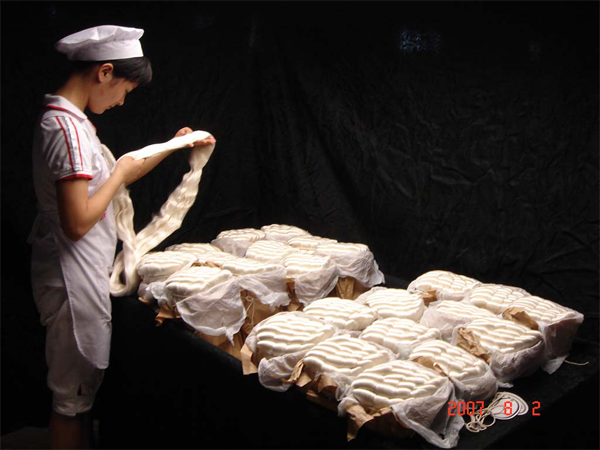
Last year, Zhejiang Television Station International Channel of China filmed the documentary “Oriental Splendor - the Rejuvenation of China's Silk Industry”. It mentioned that the most expensive raw silk in the world is in Brazil, not in China. Quality determines price. If there is no quality, there is no future for silk. As far as we know, raw silk from Brazil is exported to France, Italy and Japan for weaving, mainly for the luxury brands.
Silk industry is facing an unprecedented difficult situation, to consolidate the position of silk in the luxury market, will be the fundamental development of our industry. China's silk industry should transform from quantity growth to quality benefit to adapt to the new situation and new normal of international market.
I still remember that when I attended the “2017 International Silk Union Members Assembly” in Hangzhou in October 2017, the silk price was at a historical record high stage. Foreign buyers were worried that the price would continue to rise. But a year later, in November 2018, I attended the “2018 International Silk Union Chairman Enlarged Meeting” in Como, Italy, and the price of silk fell sharply again, by more than 25%. Raw silk price volatility in the short term, directly affected the consumption of the silk products, led to sharply reduce of global demand for silk. Because of cyclical factor of industrial chain, silk manufacturers in Europe need at least 8 to 12 months of price stability period, otherwise, more and more high-end brand will tend to use other fibers to replace silk, in the long term, fashion will gradually give up silk, thus the loyalty of customer return to silk maybe a long period of time that we can not predict. Today, there is a small amount of speculative mentality in the silk industry, which is unhealthy and especially unsustainable for traditional silk business.
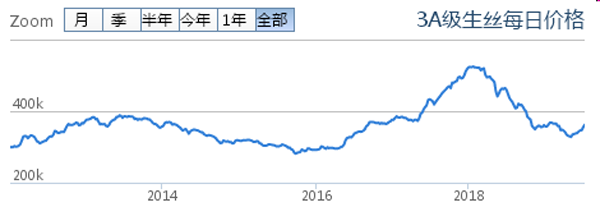
When I visited Tan-go, Japan in June 2019, Japanese customers were also extremely worried about the shrinking terminal consumption. If high-end users are shrinking, and at the same time the middle-end users are not kept up, then who should undertake the heavy duty of silk in the future?
The raw silk material of China, the trademark of Italy and the price of international market indicated the dilemma of China’s silk makes wedding dress for others. Therefore, the construction of China’s silk brand is imminent.
The so-called brand, is just namely high unit price, high quality, high profit margin, and low production output.
Some senior silk manufacturers believe that 95% of brands are not called brands, but only trademark. Brand and not brand are different, famous brand and not famous brand are different, international big brand and common famous brand are more different. Many of the international brands that we are familiar with, their common business philosophy is: rather to give up some customers, but win more other customers.
Luxury brands cannot be quantified production, but more suitable to use the spirit of the craftsmen to elaborate. The establishment of a brand needs time accumulation and precipitation, and depends on the support of cultural heritage.
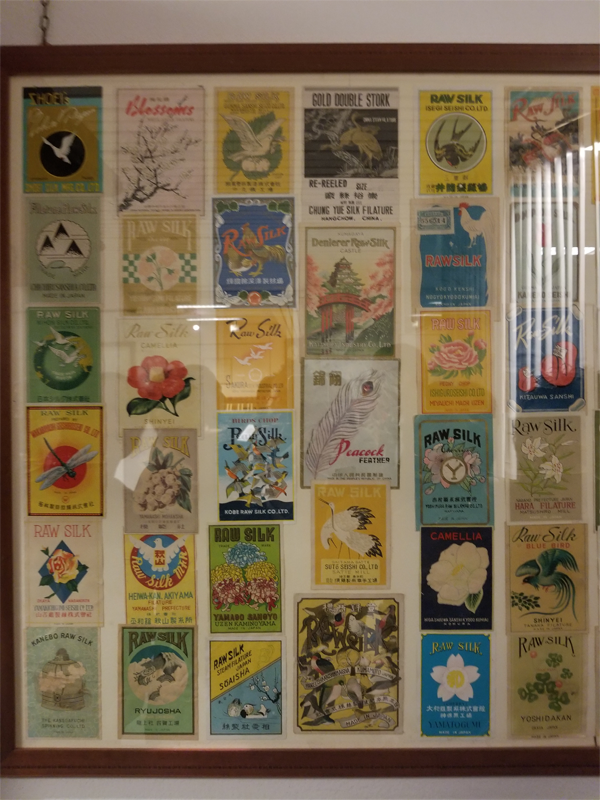
This is also the interpretation of Taifa business philosophy: Do small is better than big, and do fine is better than small.
Although brand building is a systematic project, the process is quite long, and China's brand management ability is not mature, but as an important carrier of middle pyramid, China also focuses efforts to try to diversify in the silk industry. In recent years, more natural, green, non-polluting and functional end products represented by silk quilt, silk underwear, silk fashion, silk home textile and so on are continuously developed, broadening the application fields of silk products, meeting the new demand of market diversification and multi-level. Silk fiber helps reduce carbon emissions, its benefits are gradually recognized by the neoterics, fully meet the trends of “green consumption”. We need to guide millennials to understand the characteristics of the fiber queen, let them know about silk, adore silk, and promote the consumption of silk. If millennials can take silk as a necessity, it will mean the silk industry has the future and we will have the foundation to build brand of silk.
At the same time, in order to cope with the increasingly severe pressure of rising production costs, the leading enterprises in the industry are combining traditional silk industry with modern technology intelligence, which is actively trying to locate good sericulture bases, research and develop artificial diet factory silkworm breeding, establish unmanned twist workshop, using the power of science and technology to help China's silk industry to complete the transformation and upgrading, and subsequently to promote the all-round development of the global silk industry.
Mulberry planting and silkworm rearing have a long history in Vietnam, which has absolute advantages in both climate and labor costs. Every year, more than 1,000 tons of raw silk and millions of meters of silk and satin are exported to various places.
In 2006, China carried out the project of “sericulture moving from east to west” and achieved significant results. In the future, this process may slowly shifting to “sericulture moving west towards south”, which could also be expected. In my opinion, Vietnam has a huge development space for silk. Besides the climatic conditions suitable for sericulture, Vietnam's silk reeling and weaving equipment base is also expanding day by day. Today, when China advocates “Belt and Road” development, through Indo China Peninsula -- Southeast Asia -- Africa -- Europe and finally to Italy, every country along the route is like a natural pearl, the “Belt and Road” strings these countries into a bright and beautiful pearl necklace.
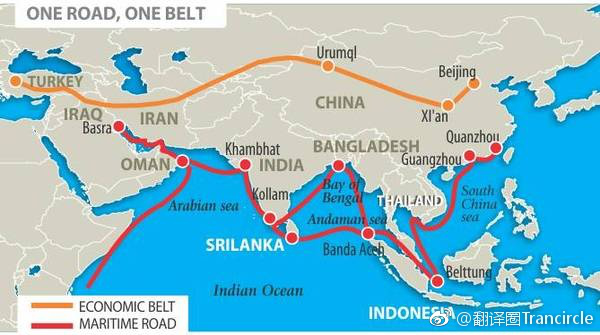
Vietnam has thousands of years of sericulture and silk weaving industry culture, and there are many silk villages (Van Phuc Silk Village Ha Noi, Duy Xuyen Silk Village Hoi An, Tan Chau Silk Village, Nha Xa Silk Village), Bao Loc is the main production area of silk, accounting for about 70% of Vietnam's silk output value. Vietnam is carrying on the silk culture in its unique form and showing the evolution process of silk development to the world.
I have visited the Antonio Ratti Foundation in Como, Italy, Tissue Museum in Lyon, France, Suzhou Silk Museum in Suzhou, China, and China National Silk Museum in Hangzhou, China. Every ancient international silk capital make their best to protect its traditional cultural heritage.
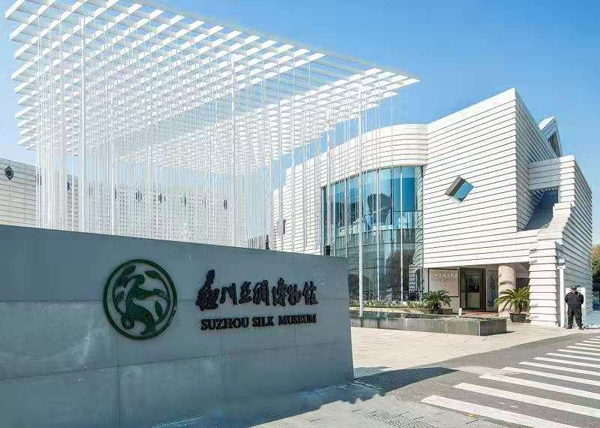
I would like to summarize my personal expectations and best wishes for the future China’s silk market for the three points:
1. Hope to systematically predict the actual quarterly supply of cocoon, silk and satin.
2. The price of raw silk can be more steady.
Try to avoid manually speculation factors, to stabilize the market as a prerequisite.
If raw silk price is in a controllable range of gradually rising, I believe the market can be acceptable, but speculation in the futures market caused by huge price fluctuations in the market, the market will not pay for it.
3. The quality of raw silk can be more stable.
In the end, thanks for Hoi An City People's Committee and Hoi An Silk Group to held the 2019 Vietnam-International Silk and Brocade Culture Festival. At the same time, thanks for International Silk Union to help us to build a communication platform. here, I also want to express my sincere appreciation to you all for coming today, without your participation and contribution, today's silk culture festival could not be so successful and meaningful. I wish you all have a pleasant stay in Hoi An. Thank you.
Let us respect the past, and be obsessed with the future!
Thank you all!
The article is a special report by the author at the "Vietnam-International Silk and Brocade Culture Festival 2019".

